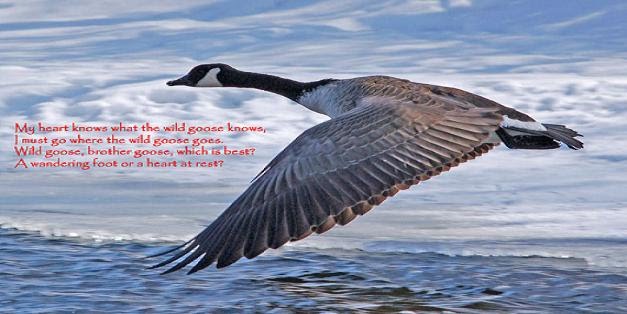There’s been a lot of publicity this year about hurricanes especially after Irene blew through the Bahamas, crossed North Carolina Outer Banks and terrorized New York City. Many people ask if we ever encountered a big storm while we cruised on Wild Goose. Yes, we endured a hurricane in the Bahamas. “Whoa-what was it like?” they ask. Well, let’s start from the beginning.
 |
| Yum! Fresh conch from the shell |
 |
| Snorkeling in the clear Bahamas water |
We had only been cruising about three months when we picked up both of our children in Key West, Florida and headed for the Bahamas. Tracy brought along her cat, Samantha, who never really warmed up to boat life. It was to be an exciting summer vacation from college, although it was a little heavy on the excitement end. Official hurricane season is June 1st until November 30th with the majority of the hurricanes in the Bahamas occurring in August and September. With that in mind, we sailed across to the Berry Islands, a stirrup-shaped chain of tiny islands, called cays and pronounced “keys”, on the northeastern edge of the Great Bahamas Bank. We leisurely fished and snorkeled our way through the islands learning about the Bahamian culture and their relaxed way of life.
 |
| Weather looks great---now |
Although the weather was fantastic where we were sailing, forecasts were looking a little grim. An early July tropical storm brewed out in the Atlantic Ocean. We made our way to one of the few somewhat safe harbors in the Bahamas, Marsh Harbor, in the Abaco Islands.
 Our first stop once we anchored the boat was the profound base of local knowledge and weather, Sapodilly’s Bar & Grill. It’s a magnet that draws thirsty boaters from the harbor with loud reggae music, bright colored lights, and the local Bahamian brew, Kalik. The weather is always a favorite topic among boaters and today is no exception. The tropical storm has intensified and is now Hurricane Bertha!
Our first stop once we anchored the boat was the profound base of local knowledge and weather, Sapodilly’s Bar & Grill. It’s a magnet that draws thirsty boaters from the harbor with loud reggae music, bright colored lights, and the local Bahamian brew, Kalik. The weather is always a favorite topic among boaters and today is no exception. The tropical storm has intensified and is now Hurricane Bertha!
 |
| Great hangout-Sapodilly's Bar & Grill also called Dilly's |
 Our first stop once we anchored the boat was the profound base of local knowledge and weather, Sapodilly’s Bar & Grill. It’s a magnet that draws thirsty boaters from the harbor with loud reggae music, bright colored lights, and the local Bahamian brew, Kalik. The weather is always a favorite topic among boaters and today is no exception. The tropical storm has intensified and is now Hurricane Bertha!
Our first stop once we anchored the boat was the profound base of local knowledge and weather, Sapodilly’s Bar & Grill. It’s a magnet that draws thirsty boaters from the harbor with loud reggae music, bright colored lights, and the local Bahamian brew, Kalik. The weather is always a favorite topic among boaters and today is no exception. The tropical storm has intensified and is now Hurricane Bertha! |
| Waiting for Bertha |
You may not have ever heard the drone computerized voice, affectionately known as Iron Mike, over the weather radio, but it sounds like a cross between Donald Duck and Orson Wells.
“Hullo all stations. This is a National Oceanographic and Atmospheric Agency weather alert. At fourteen hundred Zulu, weather advisors upgraded the tropical storm in the Atlantic to Hurricane Bertha. Bertha is traveling in a generally northwest direction at approximately twelve miles per hour and is located 385 miles southeast of Great Abaco Island in the northern Bahamas. Winds may increase to 115 miles per hour over the next twelve hours. Anyone in the path of this storm should take necessary precautions to seek safe harbor. Stay tuned to this station for further weather developments.”
“What does he mean ‘traveling in a generally northwest direction’?” I plead to the Bahamian bartender. Locust, plagues and hurricanes were never part of our original plans and I need more specific information. “Can’t NOAA pinpoint a hurricane’s direction better than generally? And, winds may increase to 115 miles per hour? Is there a may not or perhaps a when?”
I’m normally a patient person, but right now I could leap across the bar and put a stranglehold on that radio in an effort to squeeze out more information. The bartender nods and opens a handful of beer bottles. Most of the tourists have already left the island, abandoning their tropical vacation for the safety of the mainland. The rest of us have a boat either anchored in the harbor or docked at one of the marinas on the island. With Bertha traveling in our general direction, we must make a decision.
We head back to the boat and discuss our options. We could leave Wild Goose anchored in Marsh Harbor and fly back to Texas; we could pull the anchor and sail to Florida to search for an empty docking spot and take the chance Bertha will not follow us there; or we could stay aboard the boat and ride out the hurricane here. It’s a formidable decision affecting all four of us and no one wants to make the decision alone. So we vote. It’s unanimous. Wild Goose is our home. She’s tough, well-built and the thought of leaving her to face the storm alone seems unbearable.
We’ll all stay aboard Wild Goose.
Bring it on Bertha!
Bring it on Bertha!
 |
| Ominous |
-----TO BE CONTINUED-------









